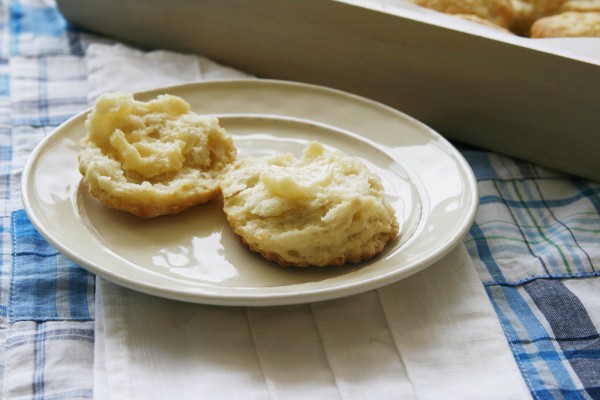How to make homemade butter
With just two ingredients, creamy, delicate butter is a treat on biscuits, breads and more. Here’s how to make homemade butter.

Butter is a staple on any kitchen table throughout the year, but the condiment is the perfect addition to many Maine summer traditions. Spread on warm blueberry muffins or summer corn, melted and drizzled over lobster, or melted and poured in a dish for the quintessential steamer clam experience ― is summer eating even worth it without butter?
While many people reach into shiny grocery store cooler doors to grab a box or two of the good stuff, butter is a dairy product that can be made at home.
At Rollins Orchards in Garland, Ernest Rollins and his wife, Andrea, make their house-churned butter every two weeks or so, selling the final product at several farmers’ markets in the Bangor area.
While Rollins makes 20 pound batches at a time, the recipe for homemade butter can be made in small batches by any home cook who has the curiosity and patience to try churning butter themselves.
Cream removed from milk is the fundamental ingredient. Cream from raw milk can be used to make butter, or regular pasteurized cream can be used. When selecting a cream to make butter from, the heavier the cream, the better, Ernest Rollins said, because heavier cream has a higher butterfat content.
How to make homemade butter
Yields about 1 pound
- Half-gallon heavy cream
- salt
- Start with a trusty stand mixer that has a lid or a cover so the cream does not splash outside of the bowl whilst churning. Pour a half gallon container of cream into the mixing bowl. The cream should be about 50 degrees in temperature.
- At high speed, whip the cream for about five to six minutes. Whipped cream will be the first product made, and as the churning continues the butterfat will completely break away from the butter milk, forming clumps of yellow butter in the bottom of the mixing bowl.
- At this stage, the butter milk must be strained from the butter using a colander or mesh strainer.
- Once the butter milk has been removed, rinse the butter to remove any remaining milk coating the exterior of the butter. This rinse will prevent the butter from spoiling.
- After the butter has been rinsed, add about a half a teaspoon of salt to the ball of butter, working it into the butter with cleans hands or a fork.
While the process of making butter at home involves a few more steps than just going to the grocery store, the homemade product is a luscious reward and something you’re sure to be using throughout the summer.
Note: The butter milk byproduct isn’t the same buttermilk you’d make buttermilk pancakes with. However, it can be used in place of milk in recipes.
This originally appeared in Bangor Metro Magazine, July 2017.
